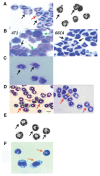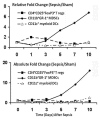A paradoxical role for myeloid-derived suppressor cells in sepsis and trauma
- PMID: 21085745
- PMCID: PMC3060988
- DOI: 10.2119/molmed.2010.00178
A paradoxical role for myeloid-derived suppressor cells in sepsis and trauma
Abstract
Myeloid-derived suppressor cells (MDSCs) are a heterogenous population of immature myeloid cells whose numbers dramatically increase in chronic and acute inflammatory diseases, including cancer, autoimmune disease, trauma, burns and sepsis. Studied originally in cancer, these cells are potently immunosuppressive, particularly in their ability to suppress antigen-specific CD8(+) and CD4(+) T-cell activation through multiple mechanisms, including depletion of extracellular arginine, nitrosylation of regulatory proteins, and secretion of interleukin 10, prostaglandins and other immunosuppressive mediators. However, additional properties of these cells, including increased reactive oxygen species and inflammatory cytokine production, as well as their universal expansion in nearly all inflammatory conditions, suggest that MDSCs may be more of a normal component of the inflammatory response ("emergency myelopoiesis") than simply a pathological response to a growing tumor. Recent evocative data even suggest that the expansion of MDSCs in acute inflammatory processes, such as burns and sepsis, plays a beneficial role in the host by increasing immune surveillance and innate immune responses. Although clinical efforts are currently underway to suppress MDSC numbers and function in cancer to improve antineoplastic responses, such approaches may not be desirable or beneficial in other clinical conditions in which immune surveillance and antimicrobial activities are required.
Figures






References
-
- Bronte V. Myeloid-derived suppressor cells in inflammation: uncovering cell subsets with enhanced immunosuppressive functions. Eur J Immunol. 2009;39:2670–2. - PubMed
-
- Murphey ED, et al. Diminished bacterial clearance is associated with decreased IL-12 and interferon-gamma production but a sustained proinflammatory response in a murine model of postseptic immunosuppression. Shock. 2004;21:415–25. - PubMed
-
- Young MR, Newby M, Wepsic HT. Hematopoiesis and suppressor bone marrow cells in mice bearing large metastatic Lewis lung carcinoma tumors. Cancer Res. 1987;47:100–5. - PubMed
Publication types
MeSH terms
Grants and funding
LinkOut - more resources
Full Text Sources
Other Literature Sources
Medical
Research Materials

